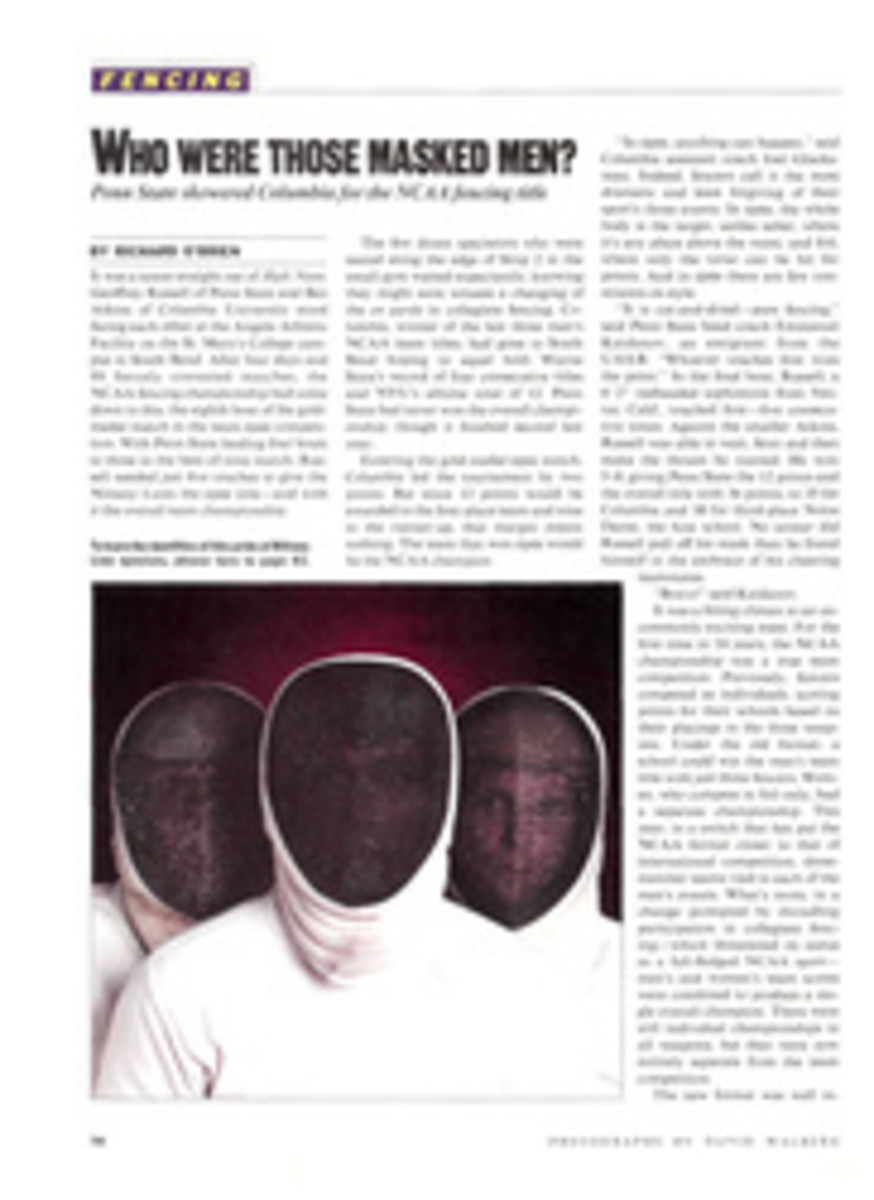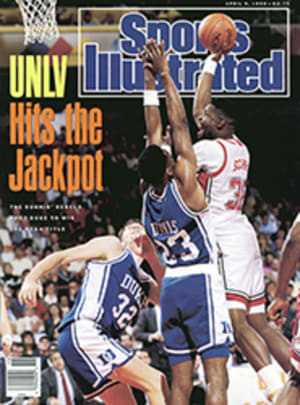
THE YEAR OF THE BADGER
For Wisconsin fans, who had been badgering their hockey team about its supposed inability to win the big one, the wait for another NCAA championship is finally over. On Sunday afternoon in Detroit, the Badgers won their fifth title—and their first in seven years—with a 7-3 victory over Colgate.
The latest NCAA title arrived six years too late to suit the 8,000 or so red-clad fans among the crowd of 15,034 in Joe Louis Arena for the championship game. The Badger backers had begged, burrowed or stolen their way to Detroit to watch their team reclaim the crown that the fans feel is Wisconsin's rightful possession.
In their natural habitat—around hockey rinks—Badger fans are loud, relentless and prone to obnoxious behavior, as when they point at a visiting goalie and chant "Sieve! Sieve!" And that's when they're being nice.
Wisconsin partisans are not above turning on their own, as Badger coach Jeff Sauer knows well. In 1982-83, his first season as coach, Sauer led Wisconsin to its fourth NCAA title. But because he was directing a team that had been recruited by Bob Johnson—old Badger Bob himself, the fellow who had won the first three—some critics claimed that Sauer didn't really deserve the credit. They ridiculed Sauer's power play and questioned his preference for recruiting genuine students over pros-in-waiting.
By any reasonable standard, Sauer has been enormously successful at Wisconsin, with a .650 winning percentage over eight seasons. Not good enough, said the critics, who complained that the Badgers had failed to reach the Final Four since Sauer's rookie year.
Therefore it was entirely appropriate that when Sauer accepted congratulations late Sunday afternoon, he had his back against the wall of a corridor in the arena. His eyes were red, his voice was weary and, he said, he hadn't slept well for a month. "There is absolutely no comparison between winning this one and the one in 1983," he said. "This one means so much more. I can't even describe how I feel. It's been awfully heavy for me. I suffered, and now it's over."
Actually, it was over before it was over. Wisconsin center John Byce scored twice in the first 3:23 of the game to set Colgate, playing with three freshman defensemen, back on its heels. Four power-play goals in nine attempts did the job for Wisconsin. For the faithful, that feat recalled the halcyon days of Badger Bob, who designed a power play that clicked 30% of the time, even in bad years. That was Johnson's legacy to Sauer, an innovative formation that flip-flops the wings, so that, facing the net, they can shoot directly off the pass, allowing for quicker shotmaking than the conventional power play. Many NHL teams use variations of the scheme today but few with greater success than the Badgers enjoyed on Sunday.
Johnson—who after five seasons as coach of the Calgary Flames is now the executive director of USA Hockey—analyzed the championship game for ESPN and praised Sauer, his former assistant at Wisconsin, for building a new house on an old foundation. "My advice to Jeff when he first took over was not to change too many things just for the sake of changing them," Johnson said. "But it's obviously become his own program now."
Today's Badgers have a roster that lists more Americans and fewer Canadians than it did under Johnson. In his day, Johnson recruited many players who would leave the university for the pros after two years, but Sauer's teams have been garnished with fewer potential NHL stars. The 1990 team includes seven seniors who have stayed the course—and passed their courses too—on the way to winning the championship. "We try to look more at the kid who needs further time to develop rather than the more highly visible players," said Sauer.
Two of the seniors, Byce and right wing Chris Tancill, scored the big goals during the Final Four weekend. Tancill scored both goals in the Badgers' 2-1 semifinal victory over Boston College last Friday night. Byce's hat trick on Sunday—his third goal went into an empty net—doomed Colgate. A third senior, defenseman Mark Osiecki—a fine prospect for the Calgary Flames, who drafted him in the ninth round in 1987—blocked half a dozen shots in both games.
Meanwhile, sophomore Duane Derksen, an unheralded replacement for goalie Curtis Joseph, who started as a freshman last season but signed with the St. Louis Blues last June, was nearly flawless in the Badger net; and junior defenseman Rob Andringa fed his teammates with a steady supply of setups from the point.
While Wisconsin has Final Four aspirations almost every year, Colgate, a school of 2,700 undergraduates, was competing in its first NCAA final in any team sport. Nestled in the quaint village of Hamilton, N.Y. (pop. 2,500, two stoplights), Colgate adheres to the equally quaint notion that scholarships should be awarded on the basis of need. But because of the cost of equipment and ice time, hockey in the U.S. has become more and more an upper-middle-class sport, and thus Red Raider coach Terry Slater has come up with players capable of both playing and paying. Under Slater, a former World Hockey Association coach who took the Colgate job in 1977 after falling in love with the school during his interview, the Red Raiders have had only two losing seasons. This year's team won the Eastern College Athletic Conference championship and went to Detroit with a record of 30-5-1.
But the enormousness of their achievement caught up with the Red Raiders on Sunday. "This was a big thing for us, to come all the way from Colgate into a place like this," said Slater of the Badger-packed arena. "I think we were awestruck." Colgate killed its penalties with an overly tight box—the four-cornered alignment used in such situations—and even tighter throats.
The Raiders had behaved with similar angst during the first period of their semifinal victory over Boston University, which had stunned top-ranked Michigan State 5-3 on March 25 to reach the Final Four. In a three-minute span in the first period, the Terriers jammed two pucks past Colgate goaltender Dave Gagnon, whose 2.73 goals-against average was among the best in college hockey this season.
But the Raiders, trailing 2-1, struck back with two quick goals in the second period, and Gagnon was masterly the rest of the way. After BU's Shawn McEachern fluttered a close one off Gagnon and into the post in the final minute, Colgate was in the finals. "Now people might even know that we aren't a toothpaste," said Slater.
But some of the Badgers professed ignorance of where Colgate was located, even as they evinced no such trouble finding the Colgate net, thanks to foolish penalties that left the Raiders repeatedly shorthanded. The Raiders regained their composure in the third period, but it was too late. The high expectations of Wisconsin fans were fulfilled at last. And for Sauer, vindication was oh, so sweet.
PHOTO
PAUL BERESWILL
Andringa's shot past Gagnon gave Wisconsin a 4-1 lead, still in the opening period.

